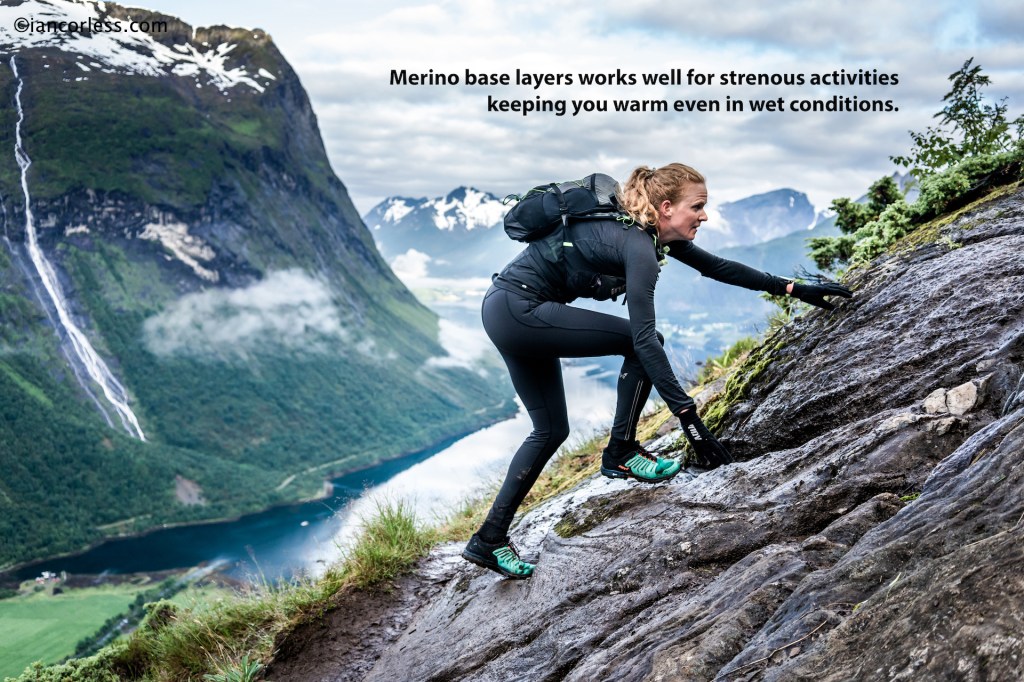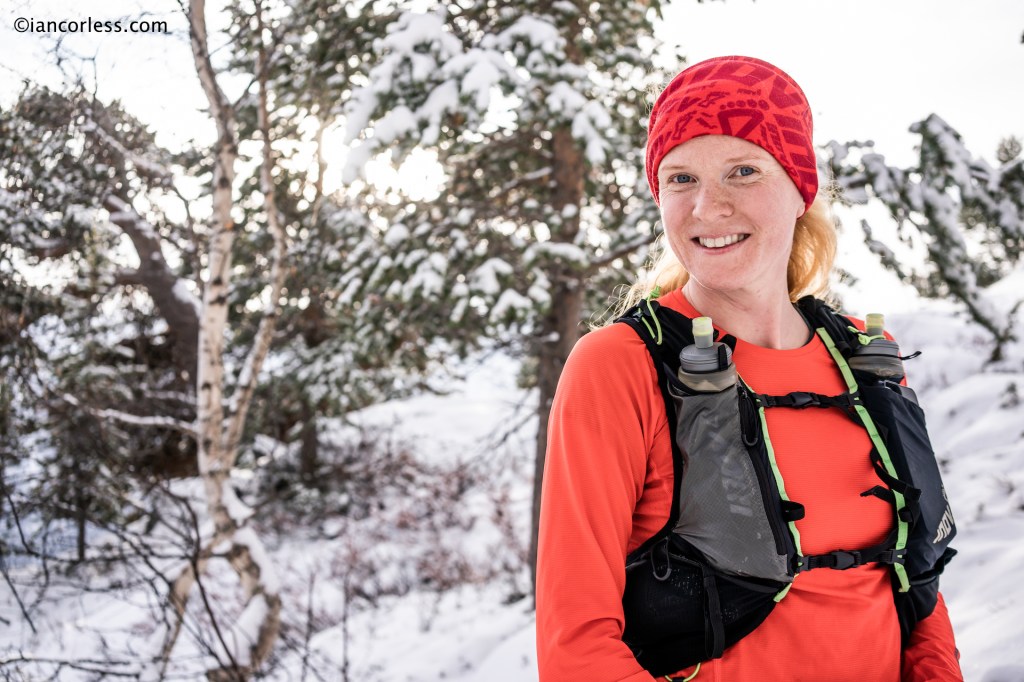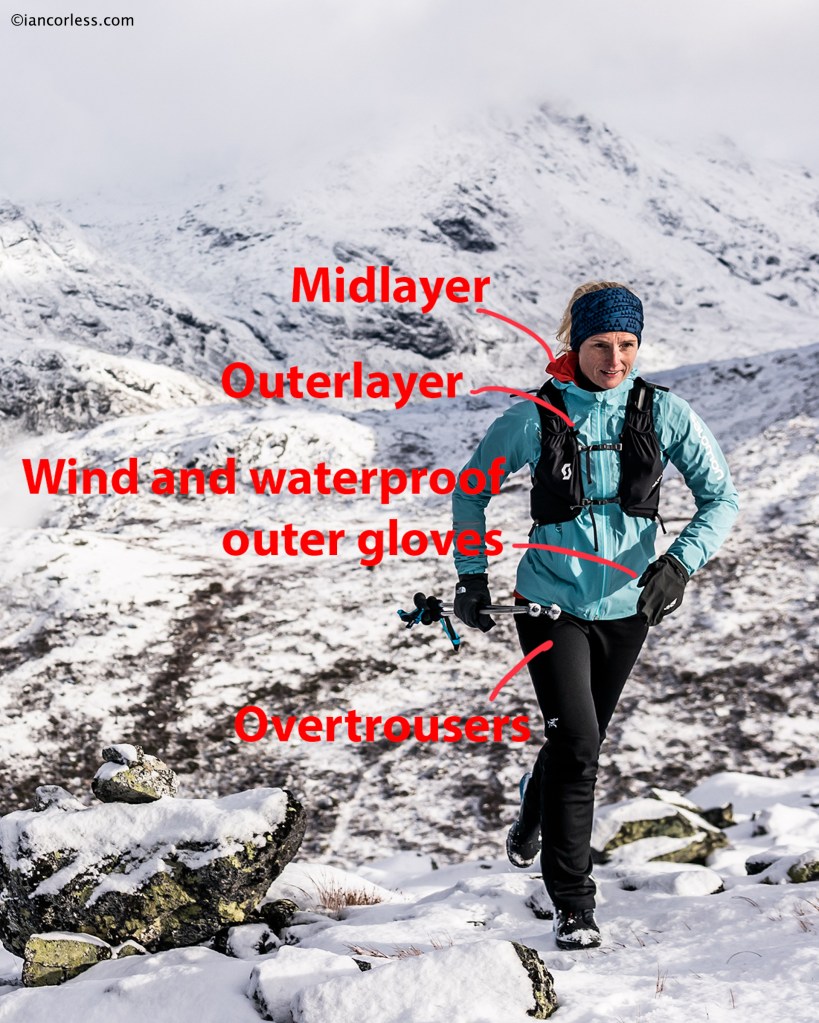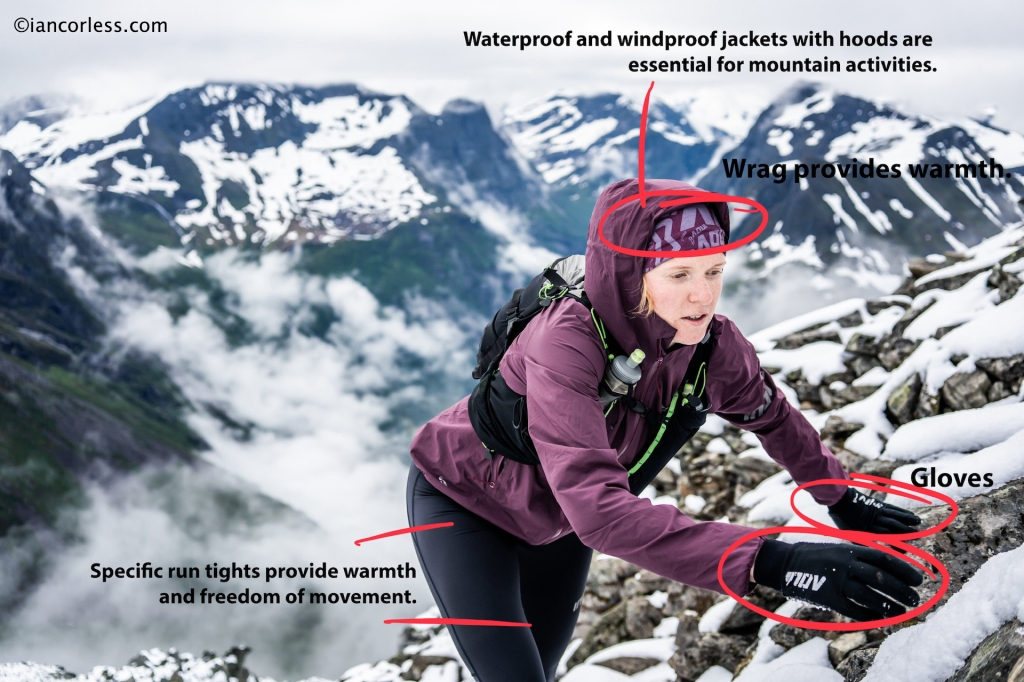
The concept of layering clothes for outdoor activity is fundamental, irrespective of the time of year. The three-layer system of base, mid and outer provides the opportunity to regulate one’s temperature whilst moving quickly or slowly for any outdoor pursuit.
BASE LAYER

The base layer is moisture-wicking layer that fits close to the skin is usually relatively thin and tight-fitting. Its primary goal is to wick sweat away from one’s body allowing the wearer to remain dry, warm and comfortable. Merino wool has long been hailed as the product to use as it has excellent wicking properties and retains heat, even when wet. Many consider the base to be just one layer, but two thin layers are often better than one thicker layer. Or a thin layer with thicker product over the top may well be required in extreme cold. Importantly with base layers, always take a spare with you. The opportunity to change to warm/ dry layers during long activities, particularly in extreme cold can be a life saver.
A base layer for the legs is only a consideration should you be adding a specific outdoor pant over the top. Again, merino works best for the base. If running, specific run tights (winter versions exist with windproof panels) are all that is usually required as the legs are moving constantly and therefore keeping warm. However, in extreme cold and wind one may need to re-think based on activity level. A base layer merino with a loose-fitting run pant over the top is an excellent scenario to start. The run pant could also be waterproof as mentioned below or for climbing, they could be down or synthetic such as Primaloft.

MIDLAYER
Often considered as an insulating layer, the mid layer also is very important for transporting excess heat from the body and base layer. Unlike the base layer, a midlayer should be looser fitting to facilitate the capture and retention of air. Air between the base and mid helps preserve heat and transport moisture. There is no definitive midlayer and often, the choice comes down to the activity you are doing, in what conditions and how active or inactive one is likely to be. For example, 100% merino is possible, a synthetic product such as Primaloft or a down product. Each has their own unique properties and uses with warmth to weight ratio being a prime consideration, particularly for an outdoor enthusiast. Depending on the product, a Merino midlayer will usually be heavier than synthetic and down being the most lightweight. Volume is a key consideration, down compresses amazingly and can be made exceptionally small fulfilling the best of most worlds, small size and low weight. Merino by contrast will take up a great deal of space with additional weight. The weather conditions will often dictate which mid layer you will choose, Merino is good for all conditions (wet and dry), Synthetic equally works well in wet and dry with a smaller volume size and weight. Down historically has only been good with guaranteed dry conditions as the down (goose or duck, goose being the best) becomes ineffective when wet. However, many brands now treat down to withstand water. This often goes via the name of Hydrophobic. Hydrophobic down has been treated with a durable water repellent that enables the down to dry quicker and resist water for longer, meaning it will perform better in damp conditions. This makes down jackets that utilize hydrophobic down more versatile, as they can be used in cold, damp conditions without being damaged.
OUTER LAYER

Designed to protect you from the elements but equally allowing the person inside to lose excess heat, outer layers are essential for outdoor activities. Many products exist and many varieties exist such as Gore-Tex Paclite Plus, Pertex Shield, Proflex Waterproof, Hyrdroshell and the list goes on. If running and moving fast and light, your choice will be dictated by product weight and size. However, if hiking and mountaineering, a heavier duty and more resilient product will be required. Also keep in mind that pants will or may be required. Again, a running waterproof pant can be minimalist whereas a hiking pant will need to be more durable.

In Scandinavia, insulated shorts are extremely popular such as those by Haglofs. They provide extra warmth, without slowing you down or interfering with your activity. Primaloft Aerogel filling and treated with Fluorocarbon free DWR treatment to withstand all conditions.
EXTREMETIES
Feet, hands and head are key places that need protection during cold and extreme weather. Often, you can get away with less layers on your core if your feet, hands and head are warm.

HEAD
Most of one’s body heat is lost through the head and quite simply, humans are designed to make sure the head and brain is kept warm. So, in cold conditions, hand and feet warmth will be sacrificed if your head is cold. Adding a layer to your head is a guaranteed way to warm up immediately so treat this as a priority. Equally, if you are too warm, removing a head covering is an easy way to cool down quickly. A merino wool beanie, Buff or wrag is superb for maintaining warmth and just as the base layer, it will remove moisture and still keep you warm even when wet.
HANDS

Cold hands make any outdoor activity miserable and there is no one definitive answer to how to keep hands warm as there are many variables based on the conditions you will be in. A good place to start is with a Merino liner glove. This liner can also be used as a stand-alone product on days when the ambient temperature requires. Over the liner, one has two options: glove or mitt. Mitts are guaranteed to be warmer, however, if you are climbing or doing a sport where finger dexterity is required, a mitt will not work. So, you need to assess your own personal needs. Finally, an outer waterproof layer can be an excellent idea if persistent rain and cold temperatures are to be encountered. You need to adapt the layers for the conditions and just like a hat, moving and adding gloves is a great way to regulate temperature.
FEET
Merino socks are essential for happy feet. In dry conditions they wick away sweat, in wet conditions they retain warmth. Just as with the body, layering socks is a great idea. Most of the time a sport specific merino sock will work, however, in winter, the demands on one’s feet increase. Consider a thin base layer sock with a thicker sock over the top, just like you would with your body. If you anticipate extreme cold and wet, a specific barrier sock may need to be considered such as a Sealskinz or equivalent.
CONCLUSION

Having multiple layers for any outdoor activity is a key to keeping warm and dry. There is no one-stop solution as the requirements vary from sport-to-sport. However, if you think base, mid and outer, you will be well equipped for any weather at any time of the year.
Please support this website. I believe everyone deserves to read quality, independent and factual articles – that’s why this website is open to all. Free press has never been so vital. I hope I can keep providing independent articles with your help. Any contribution, however big or small, is so valuable to help finance regular content. Please support me on Patreon HERE
Follow on:
Instagram – @iancorlessphotography
Twitter – @talkultra
facebook.com/iancorlessphotography
Web – www.iancorless.com
Web – www.iancorlessphotography.com
Image sales –www.iancorless.photoshelter.com


Pingback: Episode 199 – Hayden Hawks and Camille Herron | iancorless.com – Photography, Writing, Talk Ultra Podcast
Pingback: Running On Ice – A Guide | iancorless.com – Photography, Writing, Talk Ultra Podcast
Pingback: 2020 Summary and Review | iancorless.com – Photography, Writing, Talk Ultra Podcast
Pingback: WINTER RUNNING – Hints ‘n’ Tips | iancorless.com – Photography, Writing, Talk Ultra Podcast
Pingback: Icebug Route Winter Studded Shoe Review | iancorless.com – Photography, Writing, Talk Ultra Podcast
Pingback: Winter Running and Adventure Essentials – What Goes In The Pack? | iancorless.com – Photography, Writing, Talk Ultra Podcast
Pingback: Mandatory Kit for Ultra Trail, Ultra Running and Ultra Marathon | iancorless.com – Photography, Writing, Talk Ultra Podcast